
NPS / Jesse Nelson
While the red cliffs surrounding Zion are impressive in every light, they are extraordinary in the warm hues of sunrise and sunset. This page is a guide for you to experience the park at these special times of day.
LocationsViewing sunrise and sunset can be uniquely challenging—and rewarding—in Zion Canyon, as towering cliffs block much of the horizon. As such, you will likely be watching light and shadow illuminate the cliffs of Zion rather than watching the Sun crest the horizon.Here are some easily accessible areas to view sunrise and sunset throughout Zion: 
NPS Photo Sunrise
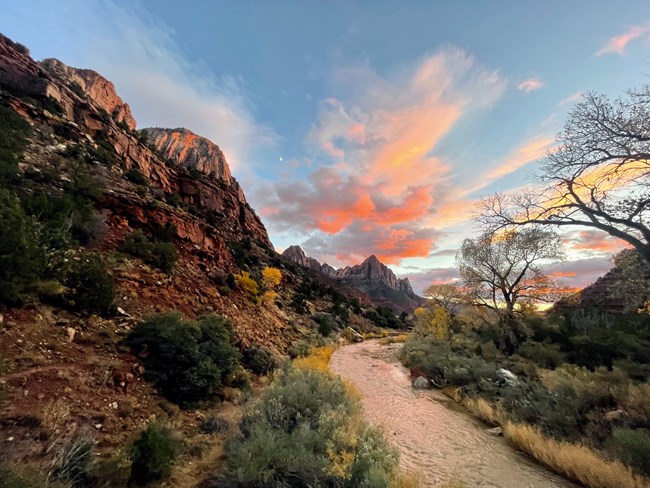
NPS / Serena Wurmser Sunset
The backcountry of Zion has many beautiful and peaceful places to view sunrise and sunset. Read more about overnight backpacking permits in Zion. Know Before You GoOnce you decide on a location to view sunrise and sunset, do not forget these actions:
Timing
NPS Photo Planning Your Sunrise and Sunset ViewingSunset and sunrise times vary throughout the year, so make sure to search “Sun rise and set times in Springdale, UT” online before you arrive in Zion. These times will correspond with the moment that the top of the sun crests the horizon (sunrise) and the moment that the top of the sun dips below the horizon (sunset)... not the moment that the Sun rises/sets behind the cliffs of Zion Canyon. Plan accordingly. If you are planning a hike on the Pa’rus Trail, Canyon Overlook Trail, or other trail of your choosing, make sure to allot time to hike before the sun rises or after it sets, and plan to begin/return after dark. Generally, an hour before sunset and an hour after sunrise offers the best lighting of the day. 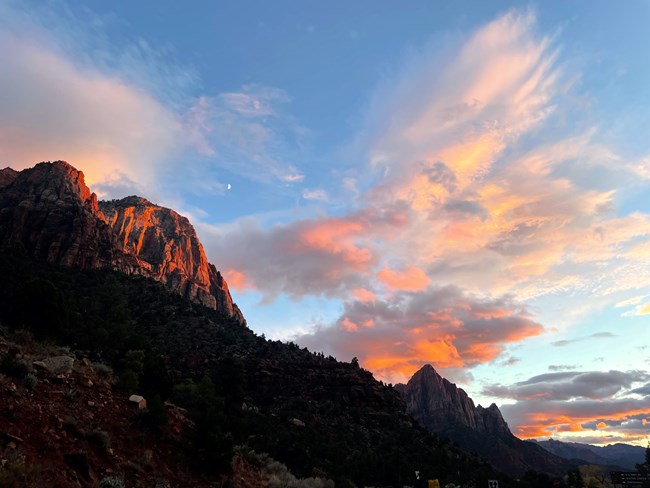
NPS / Serena Wurmser Stages of TwilightIn the 90 minutes after the Sun sets, the sky slowly bleeds from sunset to a starry night sky. Astronomers divide this time into three categories, each which takes about 30 minutes in Zion:
Once the night sky reaches astronomical twilight, thousands of stars are visible from Zion. Take advantage of this incredible night sky by following the park’s stargazing suggestions! Want to Learn More About the Night Sky in Zion?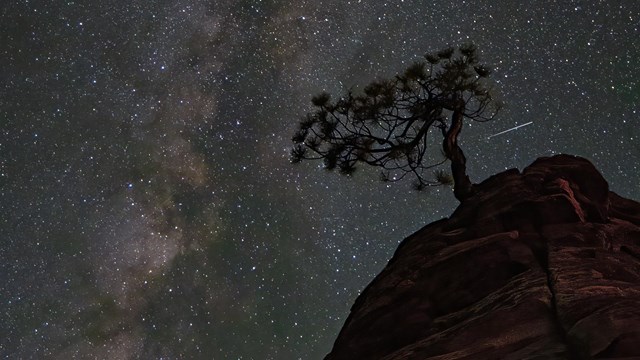
Stargaze on Your Own
Read about Ranger tips for stargazing in Zion! 
Visit other International Dark Sky Parks
See what night sky sites may be close to you! 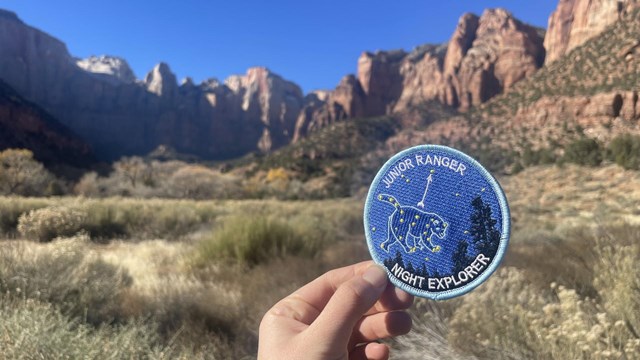
Become a Junior Ranger Night Explorer
Suitable for any age! 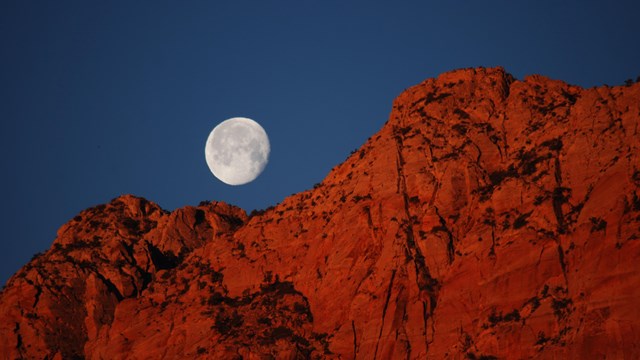
Learn about the Night Sky in the NPS
Explore the work that the NPS is doing to protect and preserve dark skies. 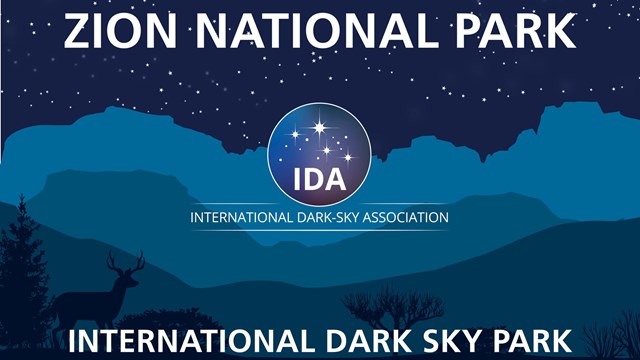
Lighting Projects in Zion
Read about what Zion is doing to protect our dark night skies. |
Last updated: January 22, 2024
